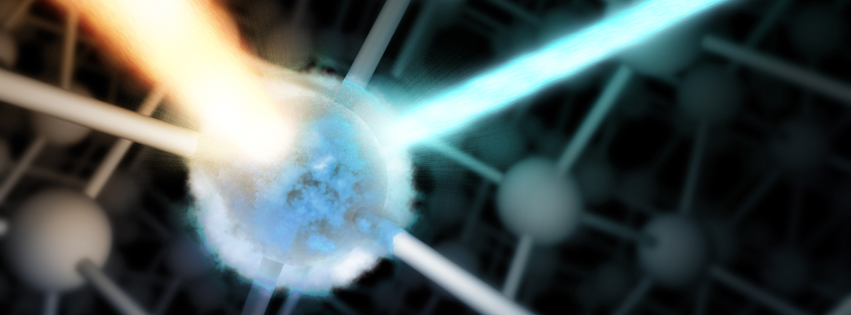Nonlinear QED and Nonlinear X-ray Optics
Nonlinear X-ray Optics & Nonlinear QED

image: courtesy Greg Stewart, SLAC
The interaction of electromagnetic radiation with matter starts to deviate from a linear response with increasing intensity. However, so far it has not been possible to investigate coherent nonlinear effects at X-ray wavelengths due to their extremely small cross sections. X-ray free-electron lasers (XFELs) are for the first time able to generate X-ray pulses with a sufficiently high intensities. Using XFEL radiation, we have recently performed first studies of this virtually unexplored field of physics. For X-ray wavelengths, the quantum aspect of the process becomes of importance and the interaction is in the regime of nonlinear quantum electrodynamics (QED). >>more
At significantly higher intensities, the presence of the field can even disturb the quantum vacuum and as a consequence lead to the generation of matter from vacuum. The low-intensity, linear regime quantum electrodynamics (QED) is the most precisely tested theory in history of science. However, only a few experimental studies of strong-field nonlinear QED exist so far. In addition to nonlinear QED investigations using XFEL radiation, we plan to use optical laser pulses of relativistic intensities to investigate pair production in electron beam-light and light-light collisions. >>more
Recent Progress
- first experimental observation of nonlinear X-ray Compton scattering
- first experimental observation of second harmonic generation at X-ray wavelengths in diamond
- first experimental observation of X-ray two-photon absorption in copper
Future Development
- further investigation of coherent nonlinear processes in the X-ray range
- plans to study electron-positron pair production from the collision of optical PW laser pulses with relativistic electrons and gamma rays.
Relevant Publications:
- X-ray and optical wave mixing
Nature, 488, 603-608 (2012) - Nonlinear X-ray Scattering
accepted, Nature Physics (2015) - Second Harmonic Generation at X-ray Wavelengths
Phys. Rev. Lett. 112, 163901 (2014) - X-ray Two Photon Absorption
in preparation